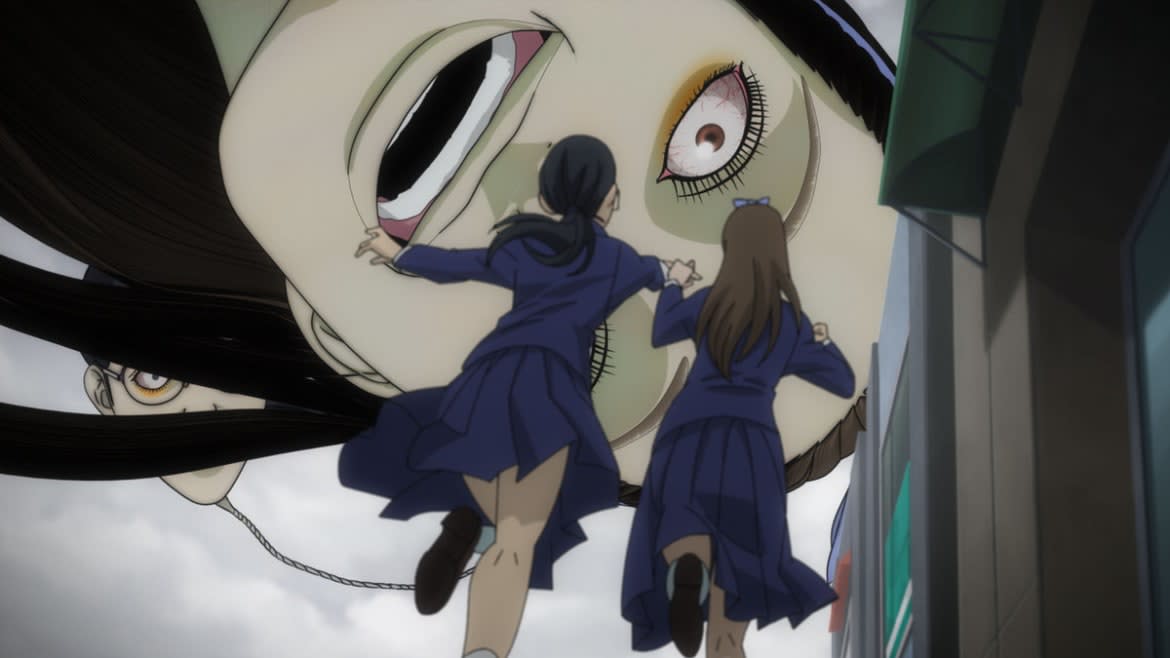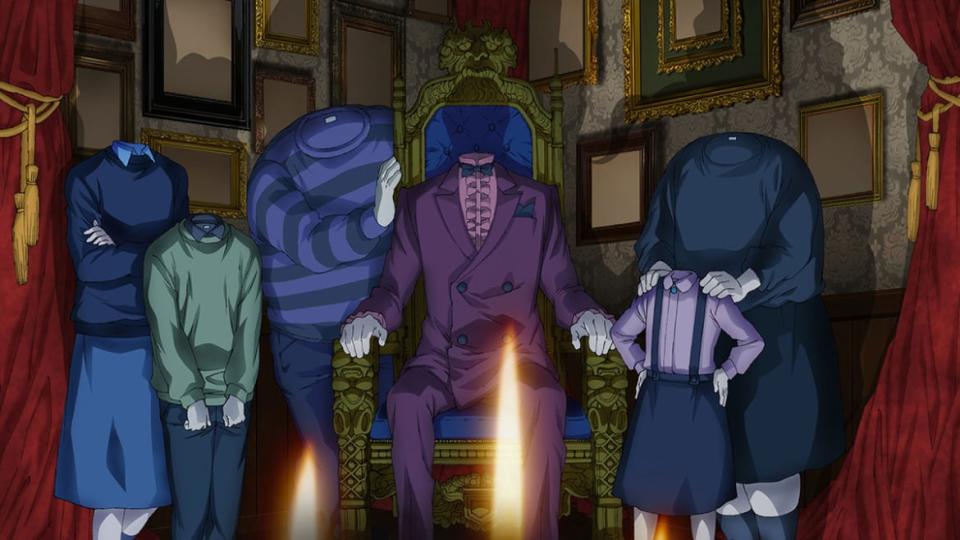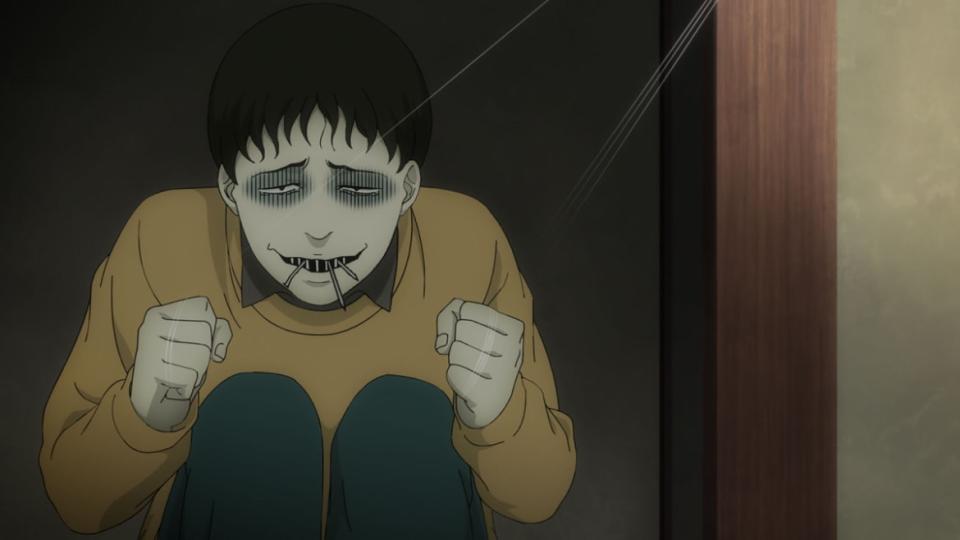Netflix’s New Anime Horror Anthology May Be Its Most Twisted

- Oops!Something went wrong.Please try again later.
Turn-of-the-millennium Japanese horror cinema (referred to stateside as J-Horror, and led by Ringu and Ju-On: The Grudge) reveled in the irrational, deriving scares from scenarios and ghouls whose existence and purpose weren’t comprehensible in straightforward terms. They were nightmares rooted in the unreal, and it’s there that Junji Ito also operates.
A celebrated manga artist whose sinister work often treads into the surreal, Ito has fashioned a career out of crafting macabre stories where logic and lucidity play second fiddle to the unfathomable and the psychotic, and where hope is as fleeting as specters and madness are omnipresent.
Though revered in his native Japan, where many of his hits have been adapted for the screen, Ito remains a lesser-known quantity in America—a state of affairs that Netflix now rectifies with Junji Ito Maniac: Japanese Tales of the Macabre, a 12-episode series of animated shorts that bring classic and new Ito narratives to mind-bending life.
Premiering on Jan. 19, it’s horror in bite-size form. The series is faithful to the spirit of the author’s finest, full of sagas in which the supernatural emerges out of the blue, innocents are plagued and persecuted for no reason, and salvation is a commodity that’s rarer than grim abuse and fateful tragedy.
Junji Ito Maniac: Japanese Tales of the Macabre’s installments all boast a classic anime style that’s in tune with their Ito source material, and they all run under a half-hour. Moreover, many feature two separate vignettes, bringing the show’s total number of stories to an impressive twenty. Of those, the most familiar to Ito fans will be “Tomie’s Photos,” as it concentrates on Ito’s famous villain, a teenage girl named Tomie who casts an abnormal (which is to say, predatory) spell over any man she wants.
Tomie is an icon who’s already received her own film franchise and TV series, and in her Netflix premiere, she does what she does best—namely, torment her male and female classmates. In this instance, her target is a fellow student who’s snapping photos of boys and then selling them to admirers, and whose pictures of Tomie reveal that she’s unique…ly monstrous.

Tomie is arguably the most recognizable face in Junji Ito Maniac: Japanese Tales of the Macabre, but the creepiest visages are found in its third episode, “Hanging Balloon.” Based on a 1998 Ito short, it concerns Kazuko, a high-school girl who’s introduced cowering in her bedroom as a nearby voice cajoles her to come outside and eat before she perishes from starvation.
As flashbacks demonstrate, Kazuko is hiding from a phenomenon of unthinkable proportions: in the wake of the hanging suicide of Kazuko’s teen-idol best friend outside her bedroom window, the country’s skies have become infested with giant balloons that resemble the heads of citizens. Worse, those floating noggins boast nooses that want to wrap themselves around their real-world counterparts’ necks. There’s no escape from these entities, nor any recourse to be taken, since puncturing the balloons spells instant death for the people they resemble.
How can this be? What does it mean? How can it be stopped? “Hanging Balloon” doesn’t bother with such questions, instead following its baffling premise through to its forlorn conclusion. Searching for answers to the unholy events depicted in Junji Ito Maniac: Japanese Tales of the Macabre is the wrong way to enjoy the anthology; only by giving oneself over to the insane can its memorably morbid wonders be properly appreciated.
This is lunacy on a primal, head-spinning level, which is partly why, following each episode’s end credits, there’s a brief sequence of scary static sights and a voice (perhaps meant to be Ito’s?) rambling incoherently about writing in blood, letters that look like insects, and using bones to punch through walls in order to reach adjoining rooms.
Junji Ito Maniac: Japanese Tales of the Macabre opens with an overtly comedic effort—“The Strange Hikizui Siblings,” which is akin to a bizarre riff on The Addams Family—before traversing more traditionally bonkers Ito terrain. A boy grapples with the discovery of an alternate-dimension doppelganger (who just so happens to be a serial killer) in “Intruder.”
A brother and sister strive to cover up the accidental murder of a friend’s sibling in a village where corpses are buried in the exact location that they perished in “Tomb Town.” A bizarre sea creature washes up on a beach, its intestines full of people who went missing years earlier, in “The Thing that Drifted Ashore.” And in a story that typifies the collection’s hallucinatory nature, a man asks a woman to keep him awake so that his slumbering self won’t replace him—leading to a finale in which bodies, and reality, turn inside out—in “The Sandman’s Lair.”

One of Ito’s recurring characters, Soichi—a gaunt adolescent troublemaker who’s perpetually chewing on nails, giving him a mouthful of spiky pseudo-teeth—shows up in two stories, pestering his older brother in “Four x Four Walls” and striking up an unhealthy relationship with a cute cat in “Soichi’s Beloved Pet.”
Throughout, Junji Ito Maniac: Japanese Tales of the Macabre portrays the cosmos as being governed by no discernible rules and thus cruelly indifferent to mortals. As in Soichi’s outings, that means the series’ protagonists often meet bleak, out-of-the-blue fates that are alternately (or simultaneously) amusing, unnerving and surprising.
While cruelty is sometimes punished, and vengeance is occasionally served, Junji Ito Maniac: Japanese Tales of the Macabre thrives when it sets aside notions of morality and justice in favor of simply expressing Ito’s deepest, darkest, subconscious hang-ups involving moldy infestation and infection, long, stringy hair, dark subterranean passageways and tunnels, and corporeal dissection and desiccation.
Be it “Layers of Terror” imagining that humans contain their prior selves within (like rings of a tree), or “Ice Cream Bus” painting kids’ appetite for cold treats in the most deranged light possible, the anthology is overflowing with ideas and images that stick precisely because they come without one-to-one explanations. They’re visions of personal and universal fears, filtered through Ito’s distinctively demented artistry.
Get the Daily Beast's biggest scoops and scandals delivered right to your inbox. Sign up now.
Stay informed and gain unlimited access to the Daily Beast's unmatched reporting. Subscribe now.

